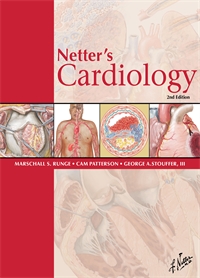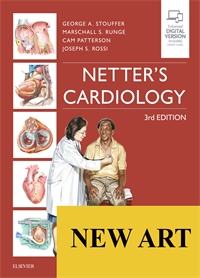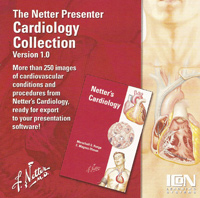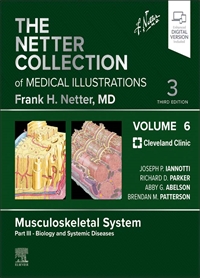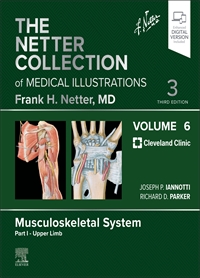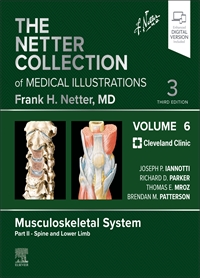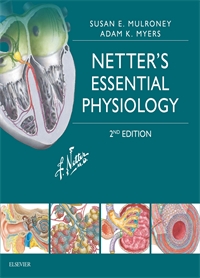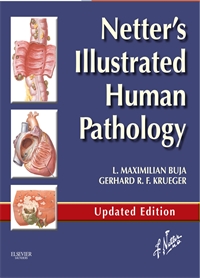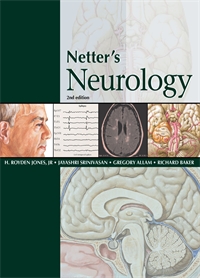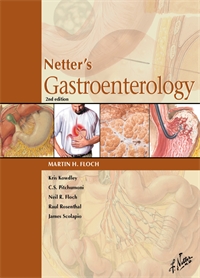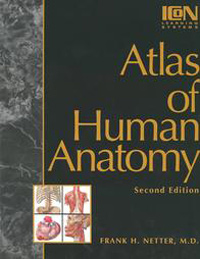Cardiology - Runge 2E
Author: Marschall S. Runge, George A. Stouffer, Cam Patterson
ISBN: 9781437706376
Introduction
- Page 16: Atherogenesis: Fatty Streak Formation
- Page 17: Atherogenesis: Unstable Plaque Formation
- Page 18: Risk Factors in Coronary Heart Disease
- Page 19: Angina Pectoris
- Page 20: Intravascular Ultrasonography
- Page 24: Transesophageal Echocardiography
- Page 25: Transesophageal Echocardiography
- Page 26: Exercise and Contrast Echocardiography
- Page 27: Cardiac MRI
- Page 27: Cardiac Positron Emission Tomography (PET).
- Page 28: Short-axis Late Gadolinium Enhanced Cardiac Magnetic Resonance Image Taken at the Level of the Mid Ventricle
- Page 28: Computed Tomography (CT) Coronary Angiography
- Page 29: left-sided Heart Catheterization
- Page 32: Electrocardiographic Leads and Reference Lines
- Page 33: Relation of Action Potential From the Various Cardiac Regions to the Body Surface ECG
- Page 33: Ectopic Atrial Rhythm
- Page 34: QRS Complex
- Page 35: U Wave
- Page 36: QT Abnormalities
- Page 37: Myocardial Ischemia, Injury, and Infarction
- Page 38: Arrhythmias
- Page 42: Radiology and Angiocardiography
- Page 43: Radiology and Angiocardiography
- Page 52: Testing to Detect Myocardial Ischemia
- Page 52: Evaluation for Hemodynamically Significant Coronary Artery Disease (CAD) In Clinically Stable Patients
- Page 55: Pharmacologic Stress Nuclear Testing
- Page 57: Stress Nuclear Imaging by Single-Photon Emission CT (SPECT)
- Page 58: MUGA and Stress-MUGA Scanning
- Page 62: Coronary Calcium Scoring
- Page 64: 3D Cardiac Computed Tomography Volume Rendering
- Page 64: Conventional Diagnostic Coronary Angiogram and Coronary Computed Tomography (CT) Angiogram
- Page 66: Magnetic Resonance Imaging of the Heart In Arbitrary Orientation
- Page 66: Cardiac Magnetic Resonance Imaging – Transmural and Nontransmural Scars
- Page 67: Sarcoidosis: CMR Phase-sensitive Inversion Recovery
- Page 68: Blood Sequences Showing Left Atrial Myxoma
- Page 72: Coronary Arteries and Cardiac Veins
- Page 72: Coronary Arteries and Cardiac Veins: Variations
- Page 73: Coronary Arteries: Arteriographic Views
- Page 74: Coronary Angiography
- Page 75: Angiographic Demonstration of Subclavian Steal
- Page 76: Simplified Approach to Management of Patients With Symptoms Suggestive of Coronary Ischemia
- Page 86: Steps in the Progression of a Stable Plaque
- Page 86: Risk Factors in Coronary Heart Disease
- Page 87: Algorithm for Differential Diagnosis of Acute Coronary Syndrome (ACS)
- Page 88: The Degrees of Flow-limiting Atherosclerosis and Plaque Rupture
- Page 91: Plaque Rupture and Inflammation
- Page 92: Atherogenesis: Fatty Streak Formation
- Page 93: Intravascular Ultrasonogram of Coronary Atherosclerosis
Coronary Heart Disease
- Page 98: Chronic Stable Angina
- Page 99: Pain of Myocardial Ischemia
- Page 99: Types and Degrees of Coronary Atherosclerotic Narrowing or Occlusion
- Page 100: Hypercholesterolemic Xanthomatosis
- Page 101: Cardiac Risk Factors
- Page 102: Stress-ECG Testing to Detect Myocardial Ischemia
- Page 103: Management of Chronic Coronary Artery Disease In Clinically Stable Patients
- Page 108: Atherogenesis: Unstable Plaque Formation
- Page 108: Manifestations of Myocardial Infarction
- Page 109: Pathophysiology of Acute Coronary Syndromes
- Page 110: Acute Coronary Syndromes
- Page 112: Algorithm for Differential Diagnosis of Acute Coronary Syndrome (ACS)
- Page 116: Characteristics of Chest Pain in Myocardial Infarction
- Page 116: Pathophysiology of Acute Myocardial Ischemia
- Page 117: Electrocardiogram (ECG) Localization of ST-elevation Myocardial Infarction
- Page 118: Optimum Treatment of ST-elevation Myocardial Infarction (STEMI)
- Page 119: Acute Percutaneous Coronary Intervention (PCI) In the Management of Myocardial Infarction (MI) With ST-elevation (STEMI)
- Page 120: Recanalization of an Occluded Right Coronary Artery (RCA)
- Page 124: Number of Patients Undergoing Coronary Bypass Surgery and Coronary Stent Procedures in the United States 1987-2008
- Page 124: Percutaneous Coronary Interventions: Vascular Access
- Page 125: Rotational Atherectomy
- Page 125: Distal Protection Device: Coronary Filter
- Page 125: Performance of Percutaneous Coronary Intervention: Stent Deployment
- Page 127: Intravascular Ultrasonography
- Page 136: Classic Paradigm of Cardiogenic Shock
- Page 137: Angiographic Views of the Right Coronary Artery (RCA)
- Page 137: Structural Relationships of the Pericardium, Heart, Valves, and Fibrous Skeleton
- Page 138: Acute Coronary Intervention
- Page 139: Intra-aortic Balloon Counterpulsation Pump
- Page 140: General Approach to Treatment of Acute Myocardial Infarction (MI)
Myocardial Diseases and Cardiomyopathy
- Page 146: Cardiac Remodeling Secondary to Volume Overload
- Page 147: Hypertension and Cardiomyopathy
- Page 147: Dilated Cardiomyopathy After Myocardial Infarction
- Page 148: Left Heart Failure and Pulmonary Congestion
- Page 148: Diphtheritic and Viral Myocarditis
- Page 149: Right-sided Heart Failure in a Patient With Dilated Cardiomyopathy
- Page 150: Simplified Diagnostic Algorithm for Heart Failure
- Page 156: Anomalies of the Left Ventricular Outflow Tract
- Page 156: Heart Disease in Hypertension
- Page 157: Left Ventricular Hypertrophy
- Page 158: Diagnostic Algorithm for Suspected Hypertrophic Cardiomyopathy (HCM)
- Page 162: Idiopathic and Infiltrative Causes of Restrictive Cardiomyopathy
- Page 163: Endomyocardial Causes of Restrictive Cardiomyopathy
- Page 165: Normal Cardiac Blood Flow During Inspiration and Expiration
- Page 166: Comparison of Normal and Pathologic Intracardiac Pressures
- Page 168: Doppler Flow Studies: Comparison of Mitral and Pulmonary Vein Flow Velocities
- Page 170: Diastolic Abnormalities in Restrictive Cardiomyopathy
- Page 182: Septic Myocarditis
- Page 183: Myocarditis in Sarcoidosis and Scleroderma
- Page 183: Diptheric and Viral Myocarditis
- Page 184: Short-axis Imaging
- Page 208: Octopus Pot
- Page 209: Takotsubo Cardiomyopathy
Cardiac Rhythm Abnormalities
- Page 217: Sinus Arrest and Sinus Block
- Page 217: Diagnostic Algorithm for Bradyarrhythmias
- Page 218: Atrioventricular Conduction Abnormalities
- Page 219: Second-Degree Atrioventricular Block
- Page 219: Complete Atrioventricular (AV) Block
- Page 224: Representation of Dual-pathway Physiology
- Page 224: Typical Electrocardiographic Recordings and Anatomic Representation of the Common Supraventricular Tachycardias
- Page 225: Atrioventricular Nodal Reentrant Tachycardia
- Page 226: Long RP Tachycardia With Inverted P Waves Highlighted By Arrow
- Page 227: Wolff-Parkinson-White Pattern With Delta Waves Highlighted By Arrows
- Page 228: Mechanism of Atrioventricular Reentrant Tachycardia In Patients With the Wolff-Parkinson-White-Syndrome
- Page 228: Wolff-Parkinson-White Syndrome With Rapid Atrial Fibrillation
- Page 229: Diagnosis of Narrow-Complex Supraventricular Tachycardia
- Page 230: Effect of Adenosine on Atrioventricular Reentrant Tachycardia, Atrioventricular Nodal Reentrant Tachycardia, and Atrial Tachycardia
- Page 234: Atrial Fibrillation
- Page 235: Complications of Atrial Fibrillation
- Page 237: Management and Therapy for Atrial Fibrillation
- Page 238: Surgical Management of Atrial Fibrillation
- Page 242: Ventricular Tachycardia
- Page 243: Changes In QRS Morphology In Ventricular Tachycardia (VT)
- Page 243: Electrocardiographic Signs of Independent P-Wave Activity
- Page 244: New AVR Algorithm for Diagnosing Wide-complex Tachycardia
- Page 245: Management of Ventricular Tachycardia
- Page 246: Ventricular Tachycardia (VT)
- Page 252: Treatment Algorithm for ICD-based Primary and Secondary Prevension of Sudden Cardiac Death
- Page 253: Sudden Cardiac Death
- Page 254: Epsilon Wave In Arrhythmogenic Right Ventricular Dysplasia Or Cardiomyopathy
- Page 254: Mechanisms of Sudden Cardiac Death (SCD)
- Page 255: Congenital Coronary Artery Anomalies
- Page 272: Algorithm Detailing Evaluation of Patients with Bradycardia and Indications for Pacemaker Implantation
- Page 273: Benefit of Biventricular Pacing
- Page 274: Algorithm Detailing Evaluation of Patients With Sudden Cardiac Death And-or Tachyarrhythmias and Indications for Implantable Cardiac Defi Brillator (ICD) Implantation
- Page 275: Therapy for Ventricular Tachycardia (VT)
- Page 276: Implantable Cardiac Pacemaker
- Page 277: Implantable Cardiac Defibrillator
Valvular Heart Disease
- Page 290: Rheumatic and Nonrheumatic Causes of Aortic Stenosis
- Page 290: Anomalies of the Left Ventricular Outflow Tract
- Page 291: Aortic Stenosis
- Page 292: Two-dimensional Echocardiography and Doppler Analysis In a Patient With Aortic Stenosis
- Page 294: Algorithm for Clinical Approach to Severe Aortic Stenosis
- Page 298: Aortic Regurgitation: Rheumatic Heart Disease
- Page 299: Aortic Regurgitation in Marfan's Syndrome
- Page 300: Aortic Regurgitation in Ankylosing Spondylitis
- Page 301: Manifestations of Aortic Insufficiency
- Page 303: Hemodynamics and Heart Sounds In Patients With Acute and Chronic Severe Aortic Regurgitation
- Page 306: Mitral Stenosis
- Page 307: Pathophysiology and Clinical Aspects of Mitral Stenosis
- Page 308: Mitral Regurgitation
- Page 309: Pathophysiology and Clinical Aspects of Mitral Regurgitation
- Page 312: Bacterial Endocarditis in Mitral Valvular Disease
- Page 314: Auscultation in Mitral Valve Prolapse
- Page 315: Diagnosis of Mitral Valve Prolapse
- Page 320: Tricuspid Stenosis and-or Insufficiency
- Page 321: Right Atrial Enlargement
- Page 322: Pulmonary Valvular Stenosis and Atresia
- Page 334: Pulmonary Stenosis
- Page 335: Pulmonary Balloon Valvuloplasty
- Page 337: Effect of Valvuloplasty on Aortic Valve Area (AVA)
- Page 339: Aortic Balloon Valvuloplasty
- Page 340: Percutaneous Aortic Valve (Edwards Sapien and CoreValve) Replacement
- Page 342: Mitral Balloon Valvuloplasty
- Page 346: Mitral Clip Procedure for Mitral Regurgitation
- Page 347: Coronary Sinus Devices for Mitral Regurgitation
- Page 348: Mitral Annuloplasty with the Mitralign System
- Page 349: Coapsys Device
- Page 354: First Generation of Synthetic Prosthetic Valves
- Page 355: Second Generation of Synthetic Prosthetic Valves and Biologic Valves
- Page 356: Algorithm for Prosthesis Selection In Valvular Heart Disease
- Page 356: Chordal Transfer, Sliding Annuloplasty, and Ring Annuloplasty
- Page 357: Exposing the Mitral Valve Through the Interatrial Septum
Pericardial Diseases
- Page 362: The Anatomy of the Pericardium
- Page 363: Diseases of Pericardium: Presentation and Treatment of Pericarditis
- Page 364: Diseases of Pericardium: Etiologies
- Page 365: ECG of Patient with Pericardial Disease
- Page 366: Diseases of Pericardium: Constrictive Pericarditis
- Page 368: Cardiac Tamponade
- Page 372: Normal Cardiac Blood Flow During Inspiration and Expiration
- Page 373: Comparison of Normal and Pathologic Intracardiac Pressures
- Page 374: Constrictive Pericarditis
- Page 376: Comparison of Blood Flow in Constrictive Pericarditis and Pericardial Tamponade
- Page 377: Echo-Doppler Patterns in Pericardial Disease
- Page 378: Pressure-Volume Relationship of Pericardium
Vascular Diseases
- Page 390: Types of Arterial Noninvasive Tests
- Page 391: Diagnostic Techniques in Vascular Disease
- Page 392: Noninvasive Evaluation of Carotid Arteries
- Page 394: Algorithm for Evaluating Patients In Whom Renal Artery Stenosis Is Suspected
- Page 394: Abnormal Captopril Renal Scan and Angiogram in a Patient with Renal Artery Stenosis
- Page 395: Three-dimensional (3D) CT Volumetric Reconstruction
- Page 396: Rotational CT Reconstruction
- Page 398: Factors Involved in the Control of Blood Pressure
- Page 399: Myocardial Fibrosis
- Page 400: Hypertension and Heart Failure (HF)
- Page 401: The Development of Heart Failure (HF) in Patients with Hypertension
- Page 406: Renin-Angiotensin System
- Page 406: Etiologies of Renal Artery Disease Likely to Cause Hypertension
- Page 407: Etiology of Hypertension
- Page 408: Differential Renin-Aldosterone Concentrations
- Page 409: Aortorenal and Selective Renal Angiography (Transfemoral Approach)
- Page 410: Renal Revascularization
- Page 411: Transluminal Renal Angioplasty
- Page 412: Percutaneous Revascularization of Stenotic Renal Arteries
Congenital Heart Disease
- Page 434: Transposition of Great Arteries
- Page 434: Interrupted Aortic Arch
- Page 435: Tetralogy of Fallot
- Page 436: Innervation of Heart: Schema
- Page 437: Pulmonary Vessel Complications of Left-to-Right Shunts
- Page 437: Clinical Characteristics of Too Much Pulmonary Flow (Pulmonary Volume Overload)
- Page 438: Anomalies of the Ventricular Septum
- Page 442: Atrial Septal Defect
- Page 443: Ventricular Septal Defect
- Page 443: Atrioventricular Septal Defect
- Page 444: Coarctation of the Aorta
- Page 445: Tetralogy of Fallot
- Page 445: Pulmonary Atresia
- Page 446: Hypoplastic Left Heart
- Page 448: Pulmonary Valvular Stenosis and Atresia
- Page 448: Balloon Atrial Septostomy for Transposition of the Great Arteries
- Page 449: Congenital Aortic Stenosis
- Page 450: Pulmonary Artery Stenosis
- Page 450: Coarctation of the Aorta
- Page 451: Patent Ductus Arteriosus
- Page 452: Atrial Septal Defects
- Page 453: Depiction of a Helex Septal Occluder for Catheter-based Closure of Atrial Septal Defects
- Page 453: Amplatzer Septal Occluder
- Page 454: Anatomic Features of Perimembranous and Muscular Ventricular Septal Defects
- Page 458: Norwood Correction of Hypoplastic Left-sided Heart Syndrome (HLHS)
- Page 459: Norwood Correction of Hypoplastic Left-sided Heart Syndrome: Fontan Circulation
- Page 460: Transatrial Repair of Ventricular Septal Defect
- Page 461: Defects of the Atrial Septum
- Page 461: Endocardial Cusion Defects
- Page 462: Tetralogy of Fallot
- Page 463: Arterial Repair of Transposition of the Great Arteries
- Page 463: Truncus Arteriosus
- Page 466: Systematic Approach to Tachyarrhythmia Diagnosis in Congenital Heart Disease
- Page 467: Tetralogy of Fallot
- Page 467: Tetralogy of Fallot
- Page 468: Transposition of the Great Vessels
- Page 469: Ebstein's Malformation
- Page 469: Tricuspid Atresia
- Page 469: Ebstein's Malformation
- Page 470: Postoperative Complete Heart Block
- Page 474: Physiologic Effects of Exercise
- Page 478: Pathogenesis and Clinical Course of Kawasaki Disease
- Page 478: Clinical Features of Kawasaki Disease
- Page 480: Cardiac Evaluation in Kawasaki Disease
Cardiac Considerations in Systemic Diseases and Special Circumstances
- Page 490: Cardiovascular Adaptations to Pregnancy
- Page 496: Preeclampsia and Eclampsia
- Page 508: Duchenne's Muscular Dystrophy
- Page 509: Myotonic Dystrophy
- Page 510: Myopathies Related to Disorders of Potassium Metabolism
- Page 512: Friedrich's Ataxia
- Page 516: Acromegaly
- Page 517: The Hyperthyroid Heart
- Page 518: Cardiovascular Effects of Hypothyroidism and Myxedema
- Page 520: Cushing's Syndrome–Mineralocorticoid Hypertension
- Page 522: Primary Hyperaldosteronism–Mineralocorticoid Hypertension
- Page 523: Pheochromocytoma
- Page 528: Extra-articular Manifestations in Rheumatoid Arthritis
- Page 530: Ankylosing Spondylitis
- Page 531: Polymyositis–Dermatomyositis
- Page 532: Progressive Systemic Sclerosis with Lung Involvement
- Page 536: Heart Tumors
- Page 536: Echocardiographic Image of a Right Atrial Tumor
- Page 539: Metastatic Tumors of the Heart
- Page 543: Massive Pulmonary Embolization
- Page 545: Deep Venous Thrombosis
- Page 546: Pulmonary Embolism of Lesser Degree Without Infarction
- Page 547: Algorithm for Patients With Suspected High-risk Pulmonary Thromboembolism (PE)
- Page 548: Algorithm for Patients with Suspected Non-high-risk Pulmonary Embolism
- Page 564: Obstructive Sleep Apnea
- Page 566: Continuous Positive Airway Pressure Therapy for Obstructive Sleep Apnea
- Page 567: Cheyne-Stokes Respiration
Impacting Heart Disease: Future Directions
- Page 598: Cardiovascular Disease in Diabetes
- Page 600: Cardiovascular Disease in Women and the Elderly
- Page 610: Effects of Exercise on Cardiovascular Health
- Page 612: Secondary Prevention
- Page 615: Exercise Training in Heart Failure (HF)
- Page 620: Metabolic Syndrome
- Page 621: Algorithm for Management of Lipid Goals
- Page 622: Nonpharmacologic Therapy for Management of Lipid Goals
- Page 623: Mechanism of Action of Lipid-Lowering Drugs
